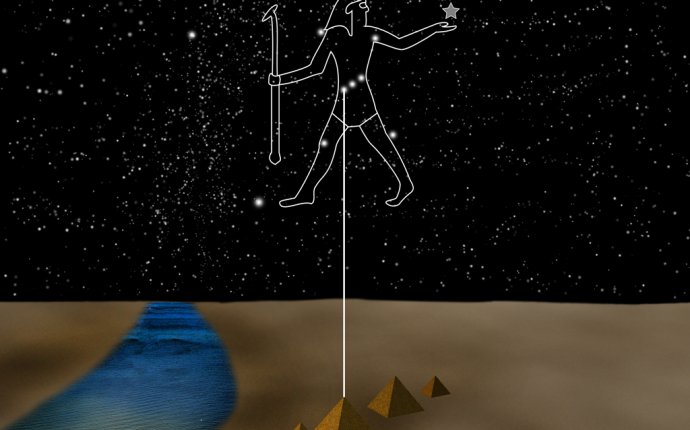
Pyramids and Astronomy
|
ALIGNMENT OF THE PYRAMIDS TO TRUE NORTH The Great Pyramid's north-south axis is aligned to within three-sixtieths of a degree of true north-south. It would be worthwhile to note that this alignment is more accurate than that of the Meridian Building at the Greenwich Observatory in London, which deviates from true north by nine-sixtieths of a degree. Even though there is no evidence in ancient texts that the Egyptians used astronomical knowledge in the construction of the pyramids, it seemed possible that they did indeed possess such knowledge, and had used it in finding the true north. This conjecture came about after the analysis of the night sky in 2, 500BC. Egyptologist Kate Spence came up with a more precise method to date the Pyramids of Giza using slight divergences in their bases' alignment from the true north direction. Nature 408'2000, Pg320-324 In this issue, she also proposed a method which might have been used by the Egyptians to find true north. The precise alignment to true north can only be achieved by astronomical algorithms but the existing Egyptians transcripts mentioned nothing about the exact way to obtain it. By comparing the rising and setting positions of the Sun in the east and the west and bisect the angle between them, we can find the true north. If we apply this procedure, the procedure must be carried out near the time of a solstice, when the Sun seems momentarily to stand motionless in its position in its seasonal transit higher or lower in the sky. However, difficulties with observing objects near the horizon due to the interference from the Earth's atmosphere and with having a perfectly horizontal view at the same level or height at both the east and west sides which make this method quite unreliable. Alternatively, we can build some type of scaffolding to provide a view line for alignment with the north pole star but there was no appropriate pole star when the pyramids were built. Directly above their heavenly counterparts, the celestial poles are points in the night sky around which the stars seem to rotate about. Now, the north celestial pole points close to the star Polaris. As the Earth's axis of rotation is changing due to precession, the positions of the celestial poles shift gradually among the stars in a 26, 000-year precessional cycle. Therefore, Spence came up with the suggestion that despite the fact that there was no pole star present for accurately pinpointing the exact true north in ancient Egypt when the pyramids were built, there was a pair of moderately shining stars, each on the either side of the ancient celestial pole, which in 2467 BC aligned exactly along a straight line including the celestial pole. One of the stars is Kochab in the bowl of the Little Dipper, the other star is Mizar in the middle of the handle of the Big Dipper Kochab and Mizar are technically known as b-Ursae Minoris and x-Ursae Majoris. In 2467 BC, an Egyptian astronomer could wait while the heavens slowly pivoted around the unmarked pole until a plumb line exactly intersected both stars, one above the invisible pole and the other below it. The sight line to the horizon point directly below the plumb line would then point straight to north. |











